If you live in an area with deer, then you're aware of how much damage the large grazing animals can cause. To successfully grow a garden in these regions, your plants will need to be able to resist feedings from deer.
If you're interested in planting wisterias, then you're probably wondering if this plant is resistant to this particular challenge. After conducting thorough research, we can tell you which of these plants are deer resistant!
Wisteria vines are aggressive growers, with most species being resistant to deer grazing. The American Wisteria [Wisteria frutescens] is well-known for its deer resistance.
Wisteria is an excellent option if you need beautiful plants that won't get damaged by deer. Keep reading to learn more about caring for these plants, their growing conditions, and more!
![Gorgeous blooming purple colored Wisteria flowers on a bright day, Is Wisteria Deer Resistant? [Inc. Chinese, Japanese, & Blue Moon Varieties]](https://gardentabs.com/wp-content/uploads/2022/11/Is-Wisteria-Deer-Resistant-Inc.-Chinese-Japanese-Blue-Moon-Varieties.png)
Is Wisteria Resistant To Deer?
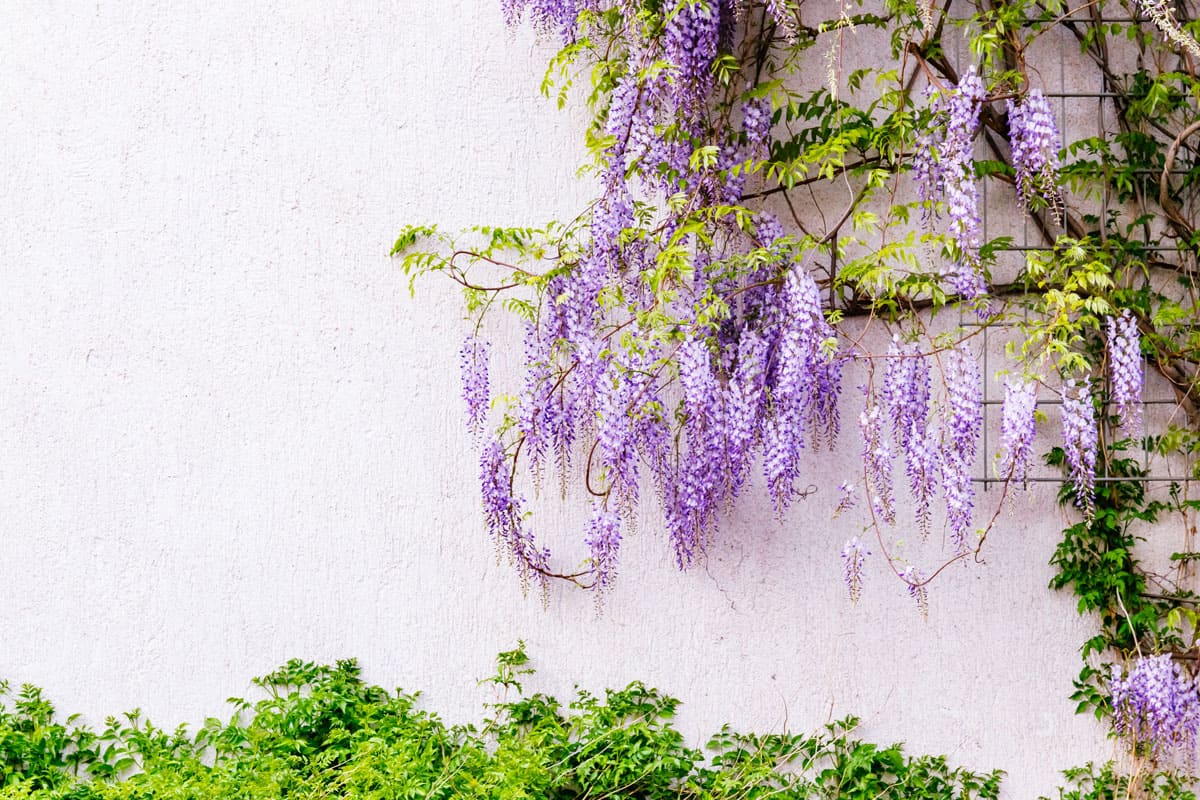
Wisteria is a genus of flowering plants that are aggressive growers and are considered resistant to deer grazing and other challenges. Let's take a closer look at the growing conditions for some of the more popular species of Wisteria.
Chinese Wisteria [Wisteria sinensis]
Chinese Wisteria is a deciduous, climbing vine that can grow between 10 and 25 feet tall and 4 and 30 feet wide. They are hardy for USDA zones 5a through 8b. You can use Chinese Wisteria to define paths, as a windbreak, and as a privacy screen.
These plants prefer locations that receive full sun in the morning and receive partial shade in the afternoon and evening.
Chinese Wisteria does best in places with clay to sandy soil that is slightly acidic. However, this plant is considered invasive in many states and can tolerate various soil types.
Chinese wisteria flowers are rapid growers and are frequently planted for their showy, fragrant flowers. This Wisteria produces blooms in blue, pink, purple, or white.
The flowers are edible and can be seen in the spring. You can see green legume fruits in the summer and fall after the flowers are done blooming.
Since Chinese wisterias are rapidly growing, it's important to trim them frequently. When left to its own devices, Chinese Wisteria can easily and quickly take over your garden.
Be prepared to consistently cut this plant to help maintain control and its shape.
Japanese Wisteria [Wisteria floribunda]
Japanese Wisteria is a woody, deciduous, twining, climbing vine that can also be trained as a shrub or tree. This plant can grow over 98 feet long and will support itself via clockwise twining stems.
Japanese wisterias are hardy for USDA zones 4a through 9b. It prefers locations with full sun and can tolerate a wide range of soils.
Out of all wisteria plants, the Japanese blossom has the largest flowers. The fragrant, showy flowers bloom in the springtime. They are purple or pink and form 12- to 18-inch long racemes.
Japanese Wisteria then produces brown seed fruits from summer until winter. Many animals will avoid the seeds because of their large size. The fruits are edible for humans. However, they must be cooked first.
It can take Japanese Wisteria some time to become established. Once it does, they grow very aggressively. This plant can become dense by growing over existing plants.
You'll need to prune this Wisteria frequently to control growth. If you're using it as a climbing plant, you'll also need to choose a structure that will be strong enough to support the plant's total weight.
Want more information on wisteria vines versus wisteria trees? Check out "Wisteria Tree VS Vine: Is There A Difference?"
American Wisteria [Wisteria frutescens]
The American Wisteria, sometimes called Kentucky wisteria, is a deciduous vine. The twining vines go in a counterclockwise direction.
It can grow between 15 and 40 feet tall and between 4 and 8 feet wide. American Wisteria is hardy to USDA zones 5a through 9b.
You should plant this vine in areas where it will get full sun. If American Wisteria receives too much shade, then it won't flower. In addition, American Wisteria prefers fertile, well-drained soil.
It may take a few years for your American Wisteria to produce blooms. Once it does, you can typically find blue, red, purple, gold, green, and white flowers.
These flowers are fragrant and showy. You can see these six-inch-long drooping flowers from April until May.
In the summer, American Wisteria produces gold or red capsule-like fruits. They are poisonous to cats, dogs, horses, and people. Eating only one seed pod can cause nausea, vomiting, and depression.
Unlike non-native Wisteria, this species is not considered invasive. Once established, these vines can grow rapidly.
However, it's best to consult with a pruning guide to determine how much and when to prune. Over-pruning can sometimes prevent flowers from blooming.
Kentucky/Blue Moon Wisteria [Wisteria macrostachya]
The Kentucky wisteria, or blue moon wisteria, was originally a variation of the American Wisteria. While incredibly similar, blue moon wisteria actually produces longer flowers.
The drooping flowers for this plant are between six and 12 inches long, are blue, and can be seen in the summer.
Blue moon wisteria is hardy for USDA zones 3 through 9. They typically grow between 15 and 25 feet tall and between 4 and 8 feet wide.
They prefer locations with fertile, well-drained soil. In addition, blue moon wisteria prefers an area that receives full sun.
If you plant it in a shadier spot, you may have problems getting blooms.
The Kentucky wisteria is a less aggressive grower than other wisteria plants. It also isn't considered invasive. You should consult with a pruning guide to determine the best pruning methods.
As with the American Wisteria, over-pruning the blue moon wisteria can cause it to stop flowering.
The blue moon wisteria is also resistant to deer grazing. However, this particular species is susceptible to fungal disease and foliage-chewing insects.
How To Plant Wisteria
Wisterias are best planted in the spring or the fall, as the best time to plant them is when they're dormant.
Growing these plants from seed can take an incredibly long time. So, it's best to start plants from a cutting or to purchase older Wisteria.
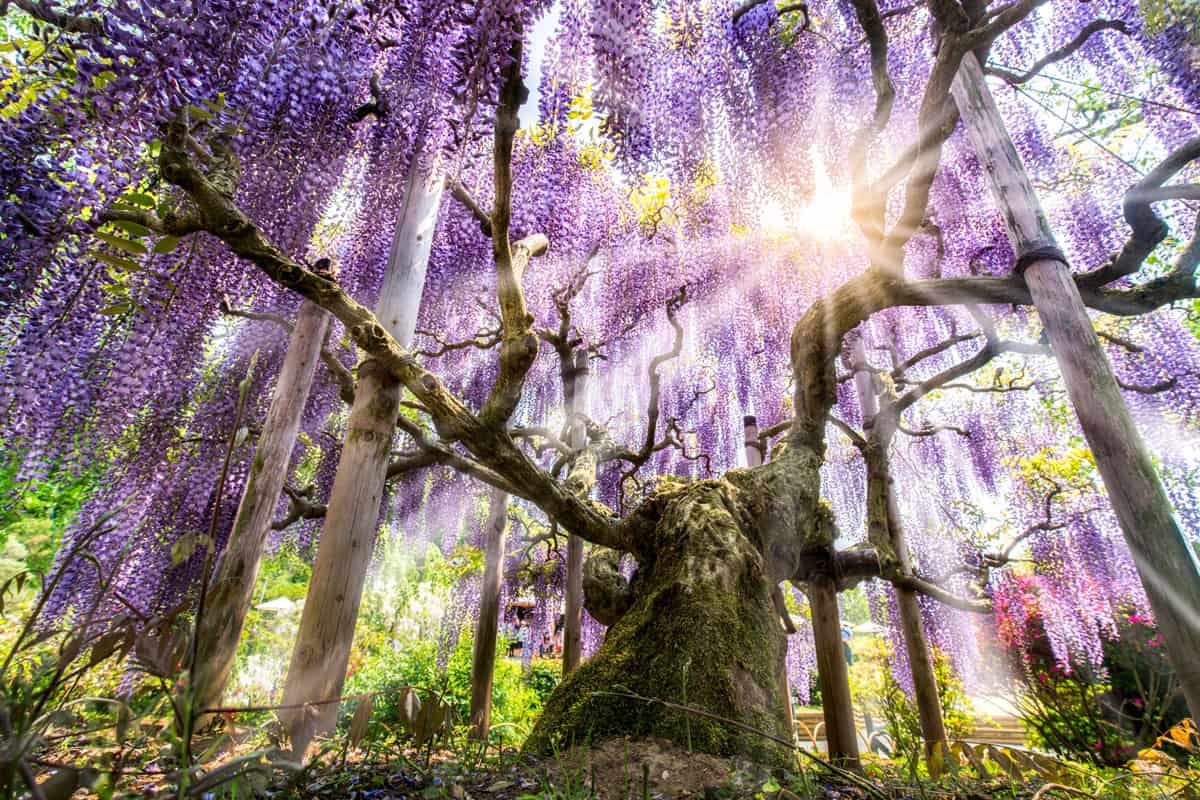
Select an area that receives a full day's worth of sun. Remember that wisterias don't flower as well in partial shade. You should also ensure that you have fertile and well-draining soil.
Since wisterias can easily grow on and around objects, it's best to plant this away from your home and other structures. At maturity, these plants are incredibly heavy. Be sure to place them near a sturdy object that can support them.
Once your location is selected, you can start planting. For established plants, dig a hole as big as the root ball and three times as wide.
Cover the plant and water deeply. If you want to grow your Wisteria on a trellis, you can also secure some vines onto this structure.
Check out this wrought iron gazebo on Amazon!
What Plants Do Deer Dislike?
Overall, deer will stay away from poisonous plants, plants that have strong scents or that are prickly in some way. So, overall these plants will help deter deer from grazing in your garden.
Some great plant options that deer aren't interested in eating include clematis, snapdragon vine, and moonflower.
Clematis are woody, perennial vines. Depending on the species you select, they can either be climbers or spreaders. With proper support, clematis can grow as long as 18 feet.
There are several colors that clematis plants can be. You can find them in blue, pink, purple, white, and variegated.
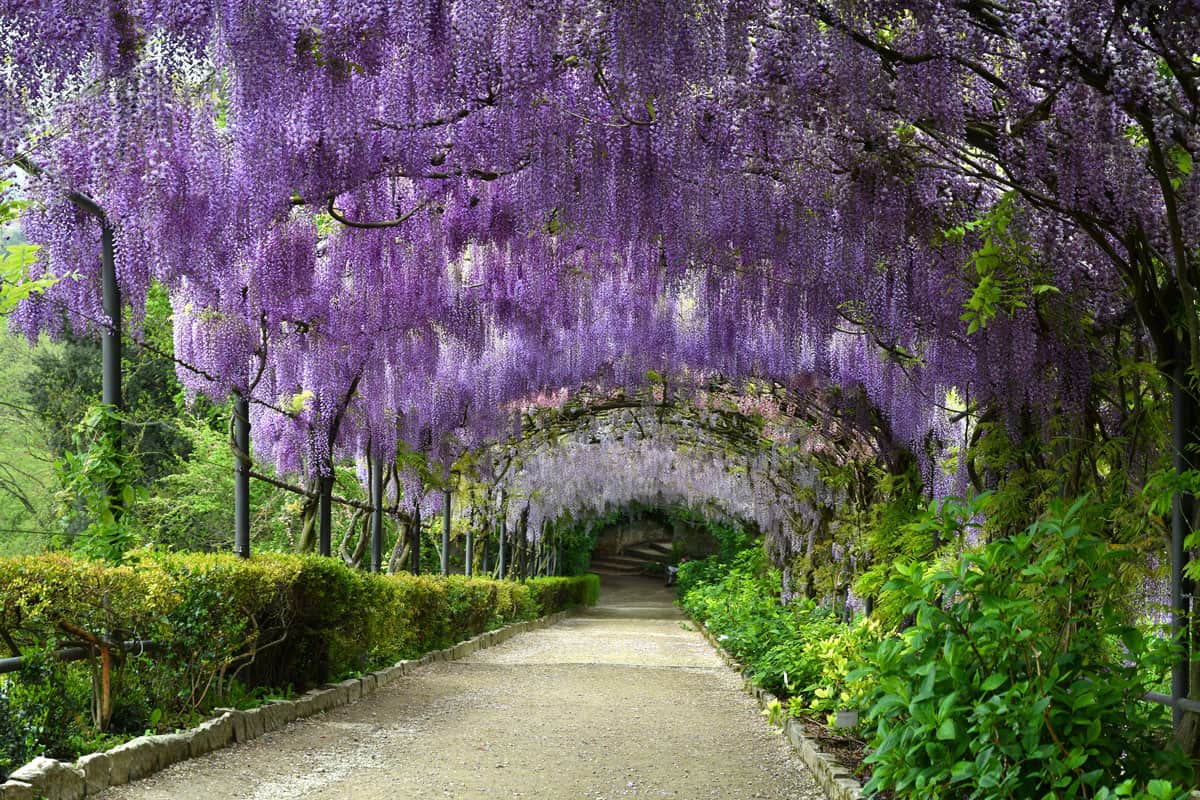
Snapdragons are hardy for USDA zones 9a through 10b. In the warmer regions, they are grown as a perennial. In colder zones, you can grow them as an annual or grow them in a container. You can also use snapdragons as a ground cover.
Snapdragon vines have a long bloom season. You can typically see these blooms from spring until summer. Snapdragon flowers are purple, red, or white. From a distance, the flowers look insignificant. However, they appear showier at a closer distance.
Moonflowers are another plant resistant to deer. These plants are hardy for USDA zones 10a through 12b. For colder regions, you can grow them as an annual. Otherwise, they are a perennial vine. You can grow moonflowers in a container and move them inside during the winter.
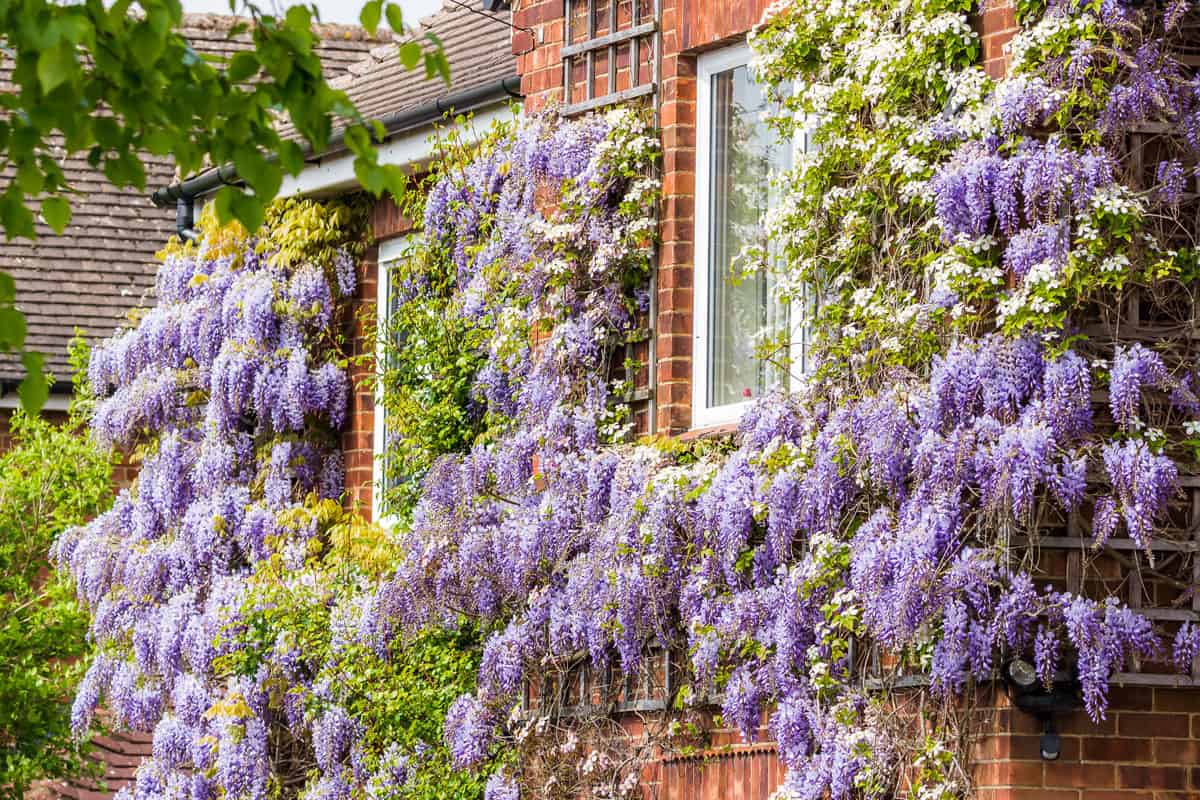
The blooms on moonflowers can be seen in the late afternoon until dawn. The flowers are white and fragrant. The nectar also attracts moths and bees.
Need some more deer deterrent tricks? Check out "How to Stop Deer From Eating My Flowers?" for more information!
In Conclusion
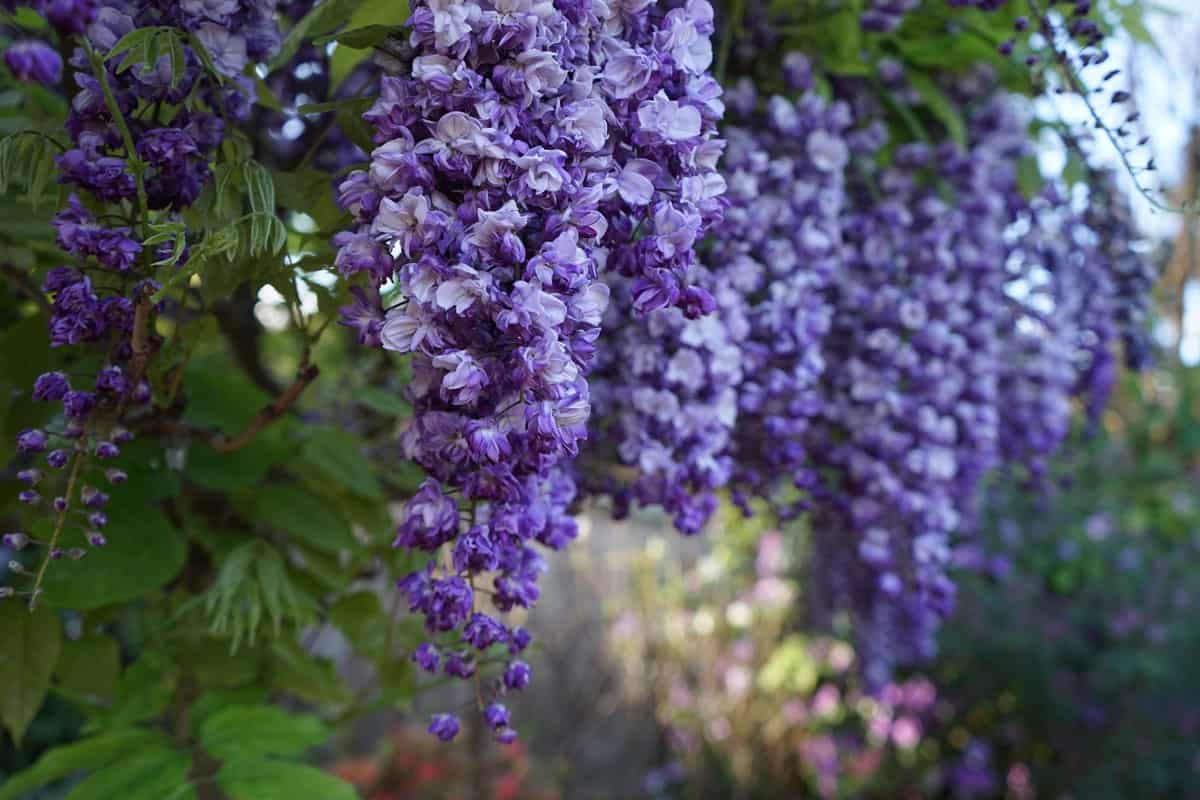
Wisterias are a fast-growing and potentially invasive plant that can resist feedings from deer. These beautiful plants grow quickly and can easily survive in several soil conditions.
Before planting, ensure you have a good location and are ready to prune back this vine's rampant growth!


We live in the Pacific Northwest on the Coast in Lincoln City Oregon and we love gardening and enjoying the deer in our front yard so buying deer resistant plants are essential. We bought the Westeria since it is stated they are deer resistant however our two beautiful huge flowers on our new vine were devoured and leaves stripped in the lower half of our 6 ft vine in less than 48 hours. Just wanted to let you know for future questions you may receive. Thank you .
Happy Gardening !
Kathy